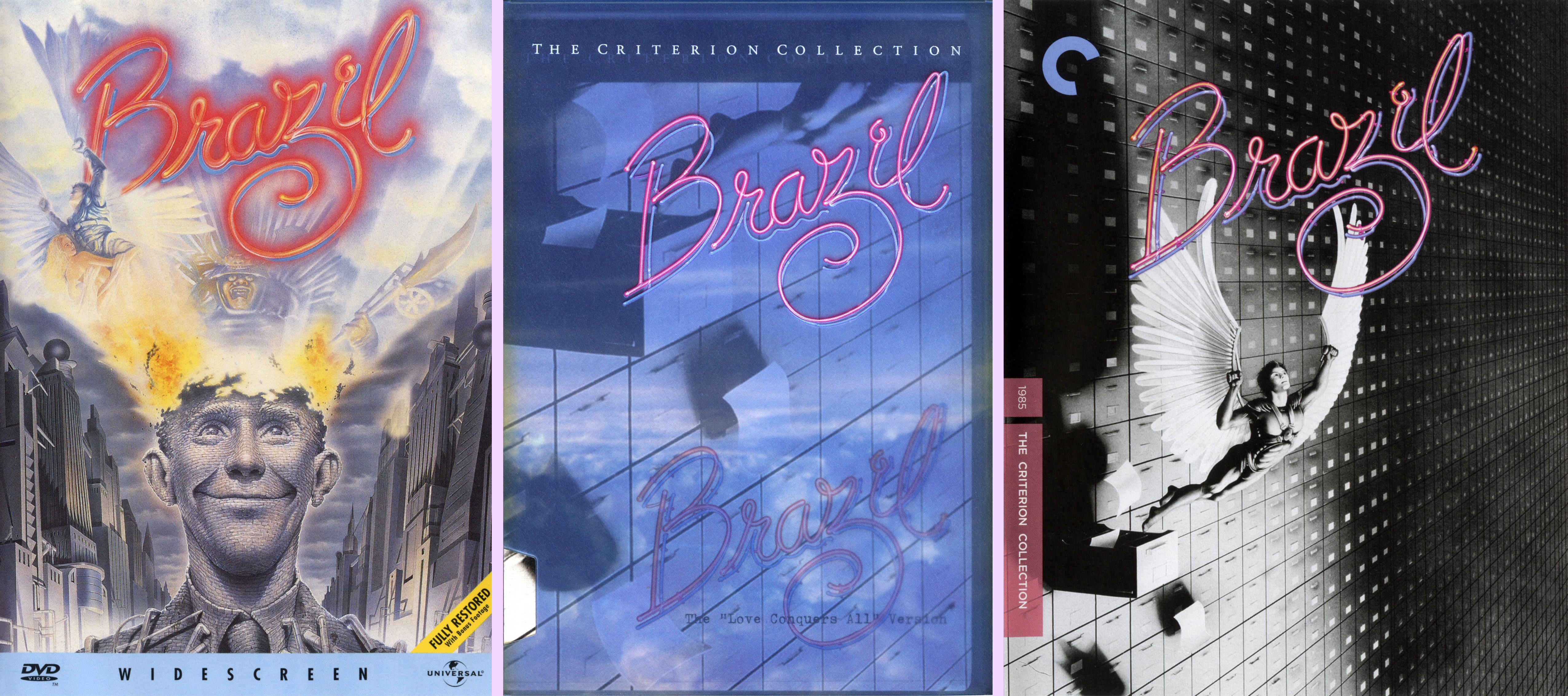The romance that's meant to be driving this story is dead on arrival, the pacing drags and Gilliam's work tends to get stuck in the superficial. As with Time Bandits, fans hoping for the consistent comedy of a Python film were left grasping. Brazil doesn't manage to live up to the works it's trying to emulate, but it does at least manage to put a modern (at least for its time) twist on things. And there's just too much clever stuff and vivid imagery in this movie to dismiss it. Especially if you're watching the right cut.
 |
| A scene only in the director's cut. |
The history of Brazil on home video in the US is pretty easy to grasp. You've just got its own studio first releasing simple, barebones editions, and then Criterion licensing it and releasing special editions. So, we start with Universal's widescreen but non-anamorphic DVD of the European cut in 1998, which they described as "FULLY RESTORED With Bonus Footage." In fact, you could follow this back further to the laserdiscs, where Universal first released the American cut in 1986, and then Criterion released as an impressive 5-disc set in 1996, which debuted Gilliam's director's cut here in the states along with the TV cut, plus heaps of extras.
And it's all of that great content that Criterion released on their still non-anamorphic 3-disc DVD set in 1999. In 2006, they reissued the same set, but now properly enhanced for 16x9 display. Then the pendulum swings back to Universal for Brazil's blu-ray debut, a barebones presentation of the American cut (a surprising decision, since even their own DVD had been the director's cut). This was released in 2011, and just reissued last year. But in between those, Criterion came out with their 2012 2-disc blu-ray edition, which included both cuts (DC and TV, not the theatrical) and everything else from their DVD set.
 |
| 1) 1998 Universal DVD; 2) 1999 Criterion DVD; 3) 2012 Criterion BD. |
 |
| 2012 Criterion BD. |
All three discs present the director's cut with its original stereo mix and optional English subtitles, in DTS-HD on the blu. Criterion does not provide subs for the TV cut, and the stereo audio is lossy even on the blu.
Now, no new extras have been produced for the film since the 1996 laserdisc. So fortunately, they came up with a lot. Universal's DVD just has the trailer, but Criterion's sets are pretty packed. Firstly, there's an audio commentary by Gilliam, and a second commentary on the TV edit by expert David Morgan. There's the original promo featurette, which runs a good half hour, and a collection of odds and ends called The Production Notebook, which is kind of a hold-over from how laserdiscs used to compile extras. It contains a featurette on the screenwriting, a bunch of animated storyboards, and additional featurettes on the production design, special effects, score and costumes. Probably the stand-out extra is an hour-long documentary called The Battle Of Brazil that covers the film's alternate cuts and struggles to get a proper home video release. There's also the trailer and a booklet with notes by critic David Sterritt. The DVD set had three amary cases in a slipbox and outer semi-transparent slip.
I keep expecting Arrow or someone (but mostly just Arrow) to come around with a fancy new 2k, or now 4k, restoration, with all new special features and, by this point, a UHD disc. But it keeps not happening (20th Century Fox is the only label to have handled it in the UK), and this 2012 Criterion blu remains the definitive release. So it's lucky for us that it holds up rather well.












The 2011 Universal Blu-ray makes for a good curiosity, being a then-fresh scan of the U.S. theatrical cut with unique colour timing (and to my eye, better fine detail) complements the Criterion set nicely for the completionist.
ReplyDeleteBuuut I've seen used copies listed online for as much as a new Criterion copy lately with some sensationalist "OUT OF PRINT" headers, and I don't think it's worth more than the $15 I paid for it ten years ago.